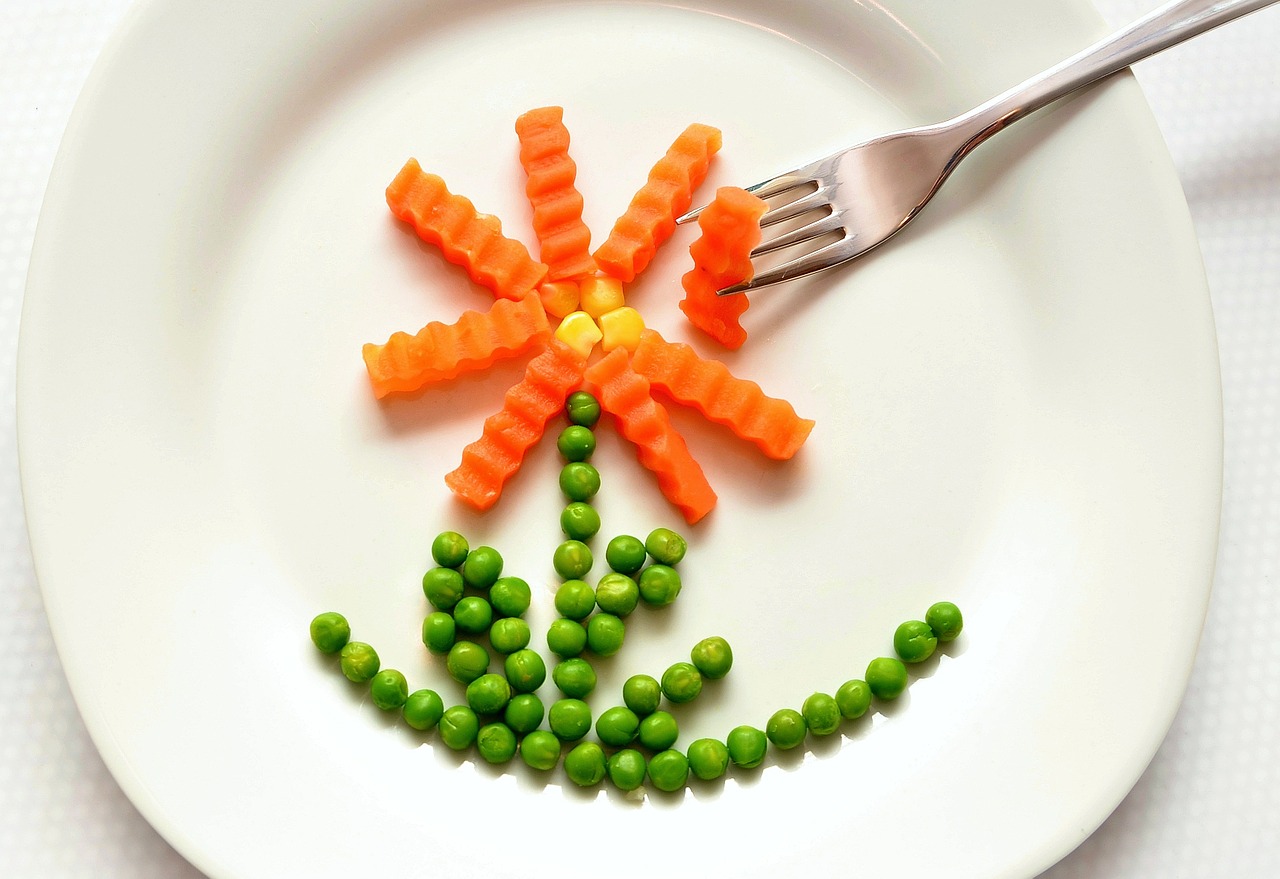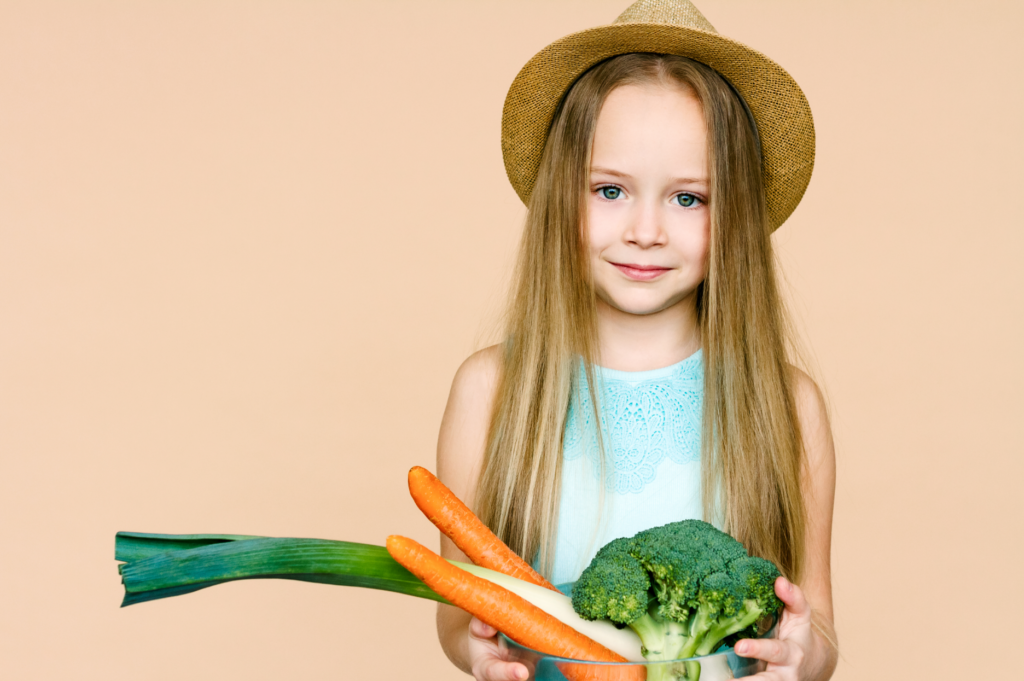Last Updated on February 5, 2024 by alli
Most kids are fussy eaters, and unfortunately vegetables are high up on their ‘do not like’ list.
That’s why each night, in most households with young children, dinner can be a frustrating time. I know this because I’ve experienced it firsthand.
When my daughter was 5 years old, there were only three vegetables she was willing to eat. They were carrots, tomatoes and potatoes (in hot chips or mash form). Everything else was off-limits and either “disgusting” or referred to as “it makes me gag.”
When I put any other vegetable on her plate, she would take the smallest of bites and quickly gulp down some water to help her swallow it down… at least she was getting her daily water intake in!
Hiding veggies is not the only way
Hiding the vegetables (as many people suggest to do), is a good idea and does work sometimes. However, if your daughter is a detective with a similar repertoire to mine, she will firstly smell her dinner, in an attempt to sniff out those hidden veggies, and then proceed to dig through it with her fork, like an excavator looking for buried remains.
Once kids catch on that you are trying to hide vegetables in meals, they are on to you, and it becomes difficult to succeed.
Fast forward two years, and by the time my daughter was 7, things were a different story. Not only was she eating a broad range of vegetables, but she was asking for a salad with dinner most nights. Who would have thought!
Yes, a child’s palate does expand and change as they age, but I know my daughter would not be eating a large variety of vegetables had my partner and I not put in the work to help her get there.
Now she happily eats – carrot, tomato, cucumber, lettuce, avocado, snow peas, green beans, cauliflower, asparagus, sweet potato, pumpkin, spinach, cabbage, zucchini, capsicum, corn, and celery.
No, I haven’t forgotten the broccoli, it’s still on her “makes me gag” list.
You too can have a salad loving daughter by trying the following five things that worked for us.
I have to be honest though, it’s not a quick fix. It takes time, patience and consistency. But the rewards are worth it in the end. I see it as a parent’s short-term pain, for their child’s long-term gain.
1.Focus on the positive
Next time your daughter doesn’t want to eat her veggies and leaves them on her plate (or any food for that matter), concentrate on the portion she has eaten and not the portion she has left behind.
Say to her, “Good effort for eating as much as you have, I’m impressed”. (Even though you may be frustrated with how much is left uneaten).
Complimenting her will make her feel good about herself and over time it will make her want to eat more.
The more we push our kids to eat, the less they want to eat. If we just focus on the positive, and compliment them on their efforts, it will give them the desire to keep going and wanting to impress us. This approach works in so many other areas of parenting too.
Have you noticed that teachers also use this approach at school? They do this because they know giving positive feedback to a child for any of their efforts (even if they get a question wrong) makes the child feel good for trying.
When I told my daughter I was writing this post, she echoed the same message. She said she remembers, each time she managed to eat even the smallest piece of vegetable (that she hated), it made her feel “accomplished”.
2.Eat a Rainbow
During the time my daughter was refusing to eat her vegetables, my partner and I started talking to her about why eating healthy was important, and how to tell if the food on your plate is healthy or not.
We explained it in a way for her to easily understand. We introduced her to the concept of eating a rainbow.
Simply put, to eat a rainbow means to eat fresh fruit and vegetable in a variety of colours every day.
An excellent way of showing your daughter an example of the right way and wrong way to eat is to give her a plate of something she prefers like chicken nuggets and chips or a pie. Then have a healthier meal cooked for yourself that includes a variety of steamed or roasted veggies.
Put the two plates side by side and compare them. Talk about how her plate is all bland with no colour and yours is bursting with a variety of colours. Explain this is how you can tell if your food is healthy and good for you. The more colour, the healthier it is.
Mention “eating a rainbow” as often as you can. You can even count the colours you see on her plate and compliment her when she has three or more different colours.
3.Talk about the benefits
Talking about the health benefits of the food you are eating can also be enticing to a child. It can appeal to their FOMO (fear of missing out).
For example, next time you eat any orange vegetables like carrot, pumpkin or sweet potatoe, you can say something like – “Well, at least my eyesight is going be fantastic tomorrow!”
Being inquisitive, a child will immediately ask “why did you say that”? This is your chance to sell it!
You can tell them that when they eat orange-coloured fruit and veggies, they are getting vitamin A which will help them see better. They are also getting Vitamin C, which boosts the immune system, or in kid talk, it keeps them healthy and strong.
A simple google search will confirm the health benefit of every vegetable in existence!
You can also follow the same procedure with other food groups too, such as –
- Milk and yoghurt – gives us healthy bones
- Fish – gives us healthy skin and hair, and is also incredibly good for our heart
Kids know we want them to eat vegetables, but do they know WHY?
4.Make it fun

Kids are more likely to eat their vegetables if we make mealtime a fun and positive experience. If they are having fun, we are more likely to get our desired outcome.
Here are some ways you can make your next family dinner more enjoyable for your daughter-
- Make her plate look ‘fun’ by arranging the food in a way that will grab her attention. My partner makes a funny face out of peas, carrots and corn on top of a pile of mashed potato. He calls it dad’s famous pea pie, and it always gets a laugh out of my daughter.
- Let her choose her own toppings for her pizza. Some good options are mushrooms, capsicum, asparagus and pumpkin.
- When having tacos have a variety of toppings ready that she can choose from. I prepare the following vegetable options for our tacos – shredded red cabbage, grated carrot, corn, diced tomatoes, shredded lettuce and diced avocado.
- Allow her to help you prepare the food at mealtimes. When kids have some involvement in preparing and cooking their food, it somehow always tastes better… funny that.
5.Dangle a carrot (not literally)
A great way to encourage children to do something is to dangle a carrot in front of them. Make that carrot a reward of some kind that they really want.
I’ve put together this fun and easy to use weekly rewards chart. It’s a great tool to entice a child to eat a rainbow of fruit and vegetables.
In ending
See how you go with these handy tips. Your daughter’s eating habits won’t change overnight, but with consistency and effort, you will definitely see improvement over time.
If I can get my daughter to go from hating vegetables to eating and enjoying them every day, so can you.
She just needs your guidance and patience.
How old is your daughter and does she eat her veggies?
For more tips, advice and resources, don’t forget to subscribe to Little Girl Shining. You’ll be joining a group of mums with one important thing in common… we all have little girls! x

